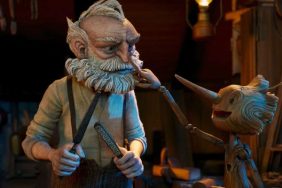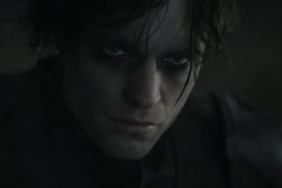For most American audiences, director Tomm Moore seemingly came out of nowhere. His first feature film, The Secret of Kells, was nominated for the 2009 Academy Award for Best Animated Feature before practically anyone had seen it, inspiring many to seek out the beautifully animated story of a young monk, a forest spirit and the creation of the fabled Book of Kells.
His follow-up, Song of the Sea, is being released in select theaters this weekend, and CraveOnline has already declared it The Best Animated Movie of 2014. It’s a haunting, exciting, lusciously animated tale of a boy named Ben, whose sister Saoirse is the last of the selkies, a mythical race of people who can turn into seals. But after the death of their mother, Ben has come to resent his sister, and he is forced to confront his responsibilities and sense of loss when she runs away from home.
I spoke to Tomm Moore over the phone to discuss the genesis of this new project, the evolution of his artistic style and the early drafts of Song of the Sea that ended differently and featured different fantastical characters. (A brief spoiler warning will be issued mid-interview.) And in the end, Tomm Moore elegantly explains why making kids movies is an even heavier responsibility than making movies for adults.
Related: The Best Movies of 2014
CraveOnline: The Secret of Kells took a lot of people, at least Americans, by surprise when it came out. It got an Oscar nomination before it was even released, no one knew about it. And then everyone saw it, and the aggressively 2D animation and the amount of detail you were able to cram into it…
Tomm Moore: [Laughs.] “Aggressively 2D.” I love it!
Thank you. It was a very interesting approach, and it fit the themes of the film. And I remember thinking, “When he does a follow up, how is he going to change his style?” And now it seems that this is the style you love to work in.
It’s an evolution, yeah. I mean, it is funny to me. Adrien [Merigeau] was the art director this time. Adrien was one of the background artists in Secret of Kells. We thought that we’d really changed the style a lot. [Laughs.] But I guess it’s so incremental that outsiders still think it’s very close related to The Secret of Kells, and I guess it is. It’s an evolution from what we were doing on Secret of Kells.
There’s definitely a distinction. Certainly your color palette has changed dramatically, which I imagine has something to do with it being about the sea…
Yeah, and also more of a kid-focused movie. Hopefully something a little bit less… We didn’t have the same – what’s the word? – we didn’t have the same need to reference medieval art or anything like that, so it didn’t need to feel like stained glass windows or medieval manuscripts. We were freed up a little bit to be more atmospheric and maybe it a bit softer and storybook-y. So we used watercolors more this time, which allowed for more dampness, aerial perspective, all that kind of stuff which I think has a more atmospheric feeling, really.
I was going to ask, with The Secret of Kells you probably had a lot of reference material. Where did Song of Sea come from visually? Was it all in your head, or were there other materials for this?
Adrien and I started doing concepts during Secret of Kells, and early on what we were talking about, which we didn’t really succeed in but what we talking about was to have such a simple style that everything looks like it was all drawn on the same page in a sketchbook. Like, [we’d] try and pare down the style a lot. We kind of used that look for the dream sequences and the opening sequence, the kind of stories and stuff. That’s very watercolor-y, very blobby, very simple. Just suggesting a background rather than drawing it in detail.
But then in contrast to that the everyday world had a whole range of references, from the landscape painter Paul Henry to… Even when I showed Adrien some of the stuff I wanted to incorporate, like the rock carvings that you see around Ireland and Scotland, he made a connection between those and modern painters, like Klee and Kandinsky, stuff like that. It totally surprised me but I thought it was kind of a cool connection to make, so we incorporated some of that kind of geometry into the line work and details. And then the painting style is based largely on Adrien’s watercolor technique, which I was really impressed by, because I try to do watercolors but I don’t have the facility he does to capture light and stuff. So he did a great job I thought with the atmospherics, you know?









